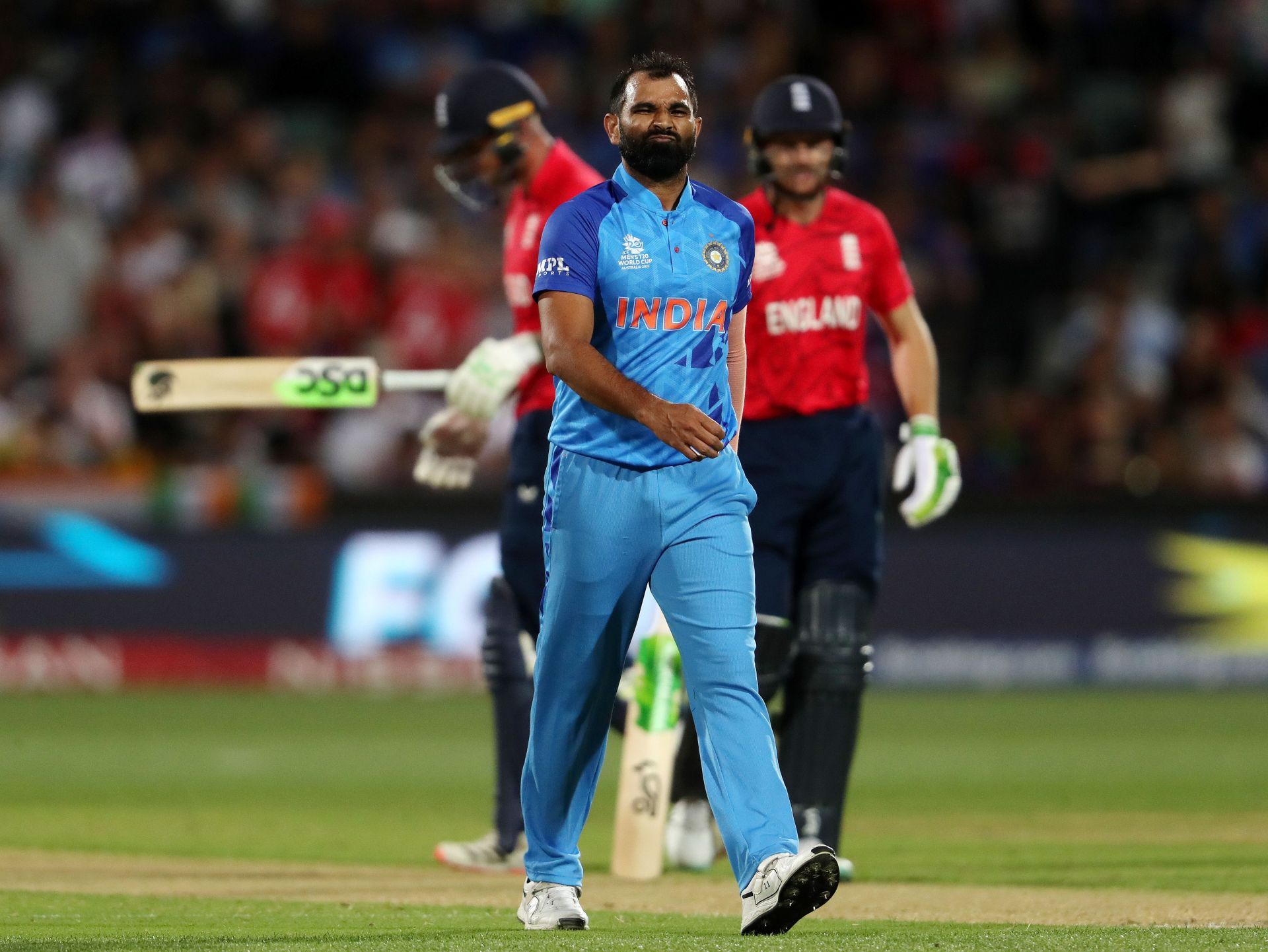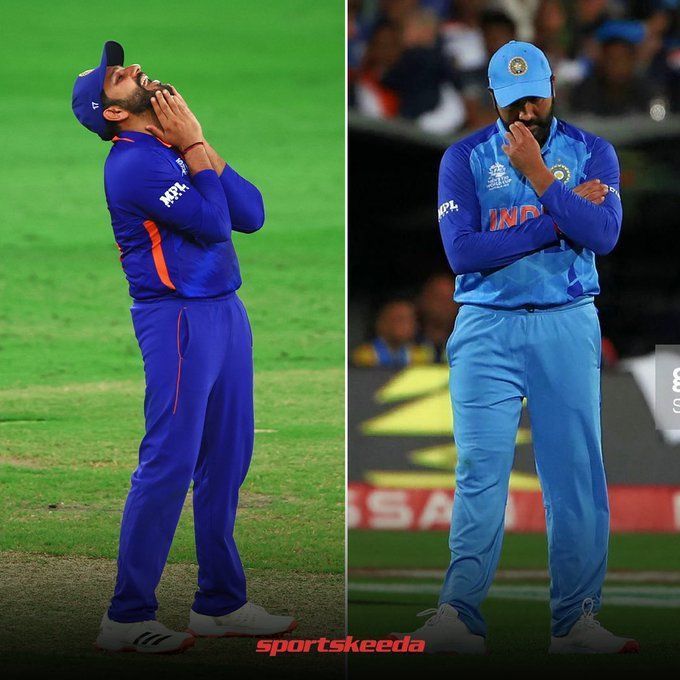
T20 World Cup 2022: India's flame of hope extinguished by the winds of time
Disclaimer: This is not a reflection in hindsight after India's semifinal exit at the ICC Men's T20 World Cup 2022. It is not a reaction to the end result but a summary of what wasn't visible at the surface level. Or maybe it was always visible, but the hopes of the average Indian cricket fan camouflaged the same.
So here we are - another semifinal defeat against all hope. Indian cricket hasn't been averse to faltering at the most crucial hurdles in recent years. If anything, that has turned into something of an Achilles heel for a team whose land has produced an overflowing pool of talent.
The hope was understandable. After all, it was the semifinal of a T20 World Cup. A good day and you're in the summit clash. Another good day and you taste glory that is etched into the annals of Indian cricket history. Except Rohit Sharma and Co. were submerged under an avalanche co-orchestrated by those gunslingers named Alex Hales and Jos Buttler.
The post-mortem(s) will continue and unsurprisingly so, as it was a case of 'another year, another disappointment' from a fan's perspective. The obvious facets are as clear as daylight. The approach with the bat, unlike the philosophy that was preached in the build-up to the tournament, was timid. The bowling unit was always walking on thin ice and overachieved until they encountered a bad day when they would have least wanted to.
As for the fielding, it pales in comparison to Indian cricket teams of yore and the boundary dimensions of Australia highlighted those issues even further. So much so that even in 2022, Virat Kohli (and Ravindra Jadeja, who missed the tournament) remain the side's most reliable run-savers by the boundary ropes.
But having said that, it would be unjust to the players who did step up if we didn't take a moment to doff our hats to them. Suryakumar Yadav justified the buzz around him and scaled the peak of becoming the top-ranked T20I batter on the planet. Uncapped at the international level five months ago, Arshdeep Singh has already become a pivotal bowling lynchpin.
Hardik Pandya's re-establishment as the one player India can ill-afford to do without hit a crescendo in the semifinal. Oh, there was also that man batting at No. 3 who, once again, carried a large burden of the team's batting hopes on his shoulders in yet another T20 World Cup.
However, with the whole clearly not outweighing the sum of the team's parts, a result like Thursday's puts a lot of things into perspective. Perhaps a peek into certain selection aspects can tell us why?
The thin line between the bold and the bizarre
Oh for crying out loud for Prithvi Shaw and Sanju Samson! What kind of eerie tragic saga was it that on either day of the shellacking received at the hands of the Three Lions, the aforementioned individuals turned a year older?
Nope. Snap out of it. The solutions are here and the problems are known. But let's look at the seeds that had sown the problems in the first place.
For starters, the pecking order philosophy under head coach Rahul Dravid, which, as pivotal as it remains in Tests and ODIs, calls for a bolder approach in T20s. For the maverick and volatile nature of the shortest format, the most fundamental aspect oft slips under the radar - T20 is as good as a different sport in its own right and calls for a different outlook altogether.
Mind you, the playing XI was largely along expected lines. It was tough to tinker with it simply because of a very simple, elementary factor called time. The time span between the two T20 World Cups and the fact that the tournament this year was in Australia deemed a complete overhaul null and void.
Time would go on to play a crucial role in the decisions over the selections of two other players - Harshal Patel and Yuzvendra Chahal. One never looked the same post an injury, while the other was on a downward spiral post the IPL. One seemed to have lost the famed dip in his off-cutter and the other his control.
But barely days after India's Asia Cup exit, the T20 World Cup squad was locked in. It was subject to change too, but the team management didn't tread that path despite Harshal failing to leave a mark on return and Chahal's returns not getting any better.
After all, knee-jerk selection changes at the nth moment haven't necessarily fared well in times gone by. Take a trip through Albus Dumbledore's Pensieve to 2019 and Ambati Rayudu says 'hi'. Chahal responds the same way if you turn back to 2021.
Once Jasprit Bumrah was ruled out of the T20 World Cup, it threw the biggest spanner into India's works. Yet, with confidence lost in the bolters tried over the months, vis-à-vis Avesh Khan and Umran Malik, the management and selectors went two steps backwards to recall Mohammad Shami and Umesh Yadav for the home series against Australia and South Africa.

The former didn't have a bad T20 World Cup 2022 campaign, mind you. But in a situation where a bold call could have been taken, considering how close to irreplaceable Bumrah simply happens to be, it was a conservative step.
In short, a lot comes down to judgment calls in selection. T20 cricket is a high-risk high-reward format, but that's where it ends. There is little to no dividend on offer for a low-risk approach in this format, be it on the field or outside of it.
Some of the judgment calls were certainly vindicated since India ran into trouble at the wrong juncture but they backfired. Other decisions weren't the best by any stretch, yet that didn't turn out to weigh the team down as much.
The result of all this, plus the failure of a few A-listers to put their hand up, culminated in a cacophonous evening in Adelaide where the sun set on the Indian team's campaign. Some can rightfully argue that the team overachieved in certain facets, but with expectations sky-high as always with the Indian team, their world came crashing down. Once again.
T20 is a different sport and selection must follow suit
It's not rocket science any more in good 2022. T20 is a different sport under the universal set called cricket. Plot a Venn diagram between players best suited for the right format and the intersection being a miniscule one shouldn't come as a surprise.
One could argue over how much say a selector in India has and if it pales in comparison to that of the captain and coach. All of that is conjecture, though. The fact as to what needs to be done is simple - revising the metrics that go behind selection in T20 cricket.
The quanta of runs or wickets will not suffice for a simple reason - T20 statistics are, on most days, immaterial on face value. Including the oft-used foiled metric called BASRA (Batting Average and Strike Rate Aggregate). An added context is imperative to constructing a set of 11 that covers all bases and reading between pure numbers is a start.
At the cost of stating something very obvious, there are two other major issues that must go high up on the agenda of the revamp (if we see one). Firstly, the fielding. It's self-explanatory and recent mishaps add weightage to it. Secondly, the lack of multi-dimensional skillsets.
If it isn't a unit with mad depth in batting such as England's, it must at least come down to the bowlers being agile on the field like the Black Caps. In the current Indian setup, neither is the case at this point.
The best bowlers in the side could do with evolving into efficient tonkers since the opportunity cost of weakening a bowling unit for added depth is significant. Shaheen Shah Afridi does that for Pakistan, and he showcased the same in their T20 World Cup opener against India.
The same applies for the batting department, which already has the tempo of pacing an innings to solve. These are obvious solutions, but they were always the obvious need of the hour. It was in 2016. It was in 2021. Things have clearly not taken a turn for the better as 2022 is in its final stretch.
The time hasn't come. It has already passed. The changed outlook towards T20 cricket in India had to start a few years earlier. A pandemic-induced break and postponed T20 World Cup tournaments have cut the luxury of time. That luxury is now available with the next T20 World Cup in the Caribbean and the United States in 2024.
If, for some reason, that cushion contracts, you'd have to say that a cavalier route of binning the tried and tested philosophy is the inevitable path to tread. It will come down to a few judgment calls again, and greater the wiser calls, the better the chances of glory. But the outlook has to change and it's about time the one-wheeled rickshaw evolves into a superfast express.
Also read: T20 World Cup 2022: 3 issues India need to address going forward in T20Is.

